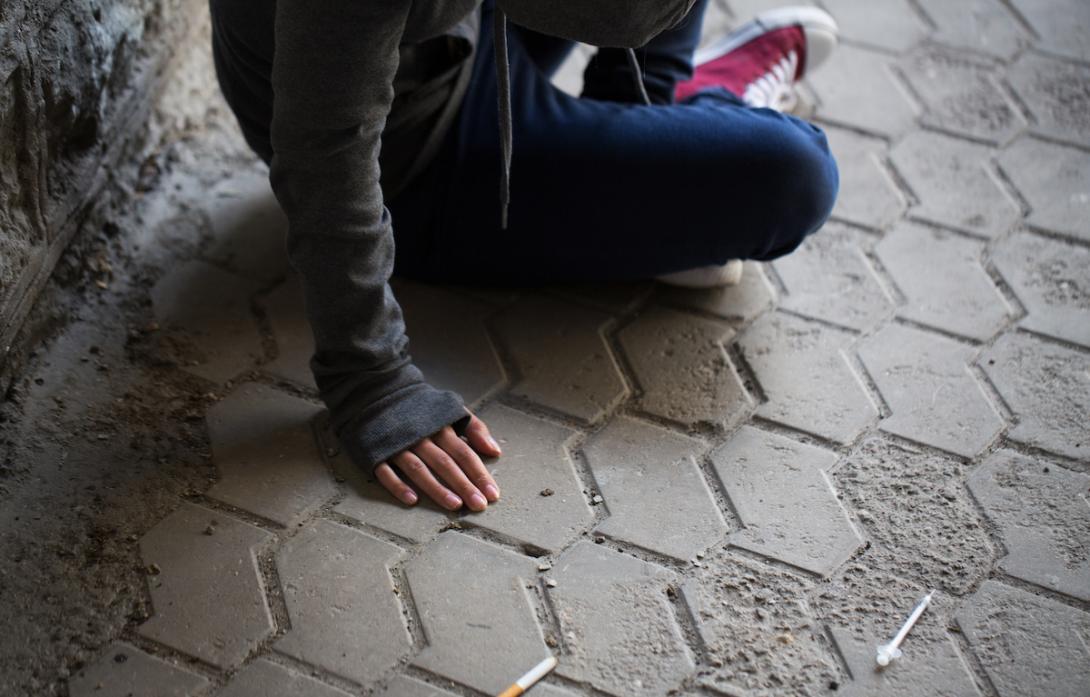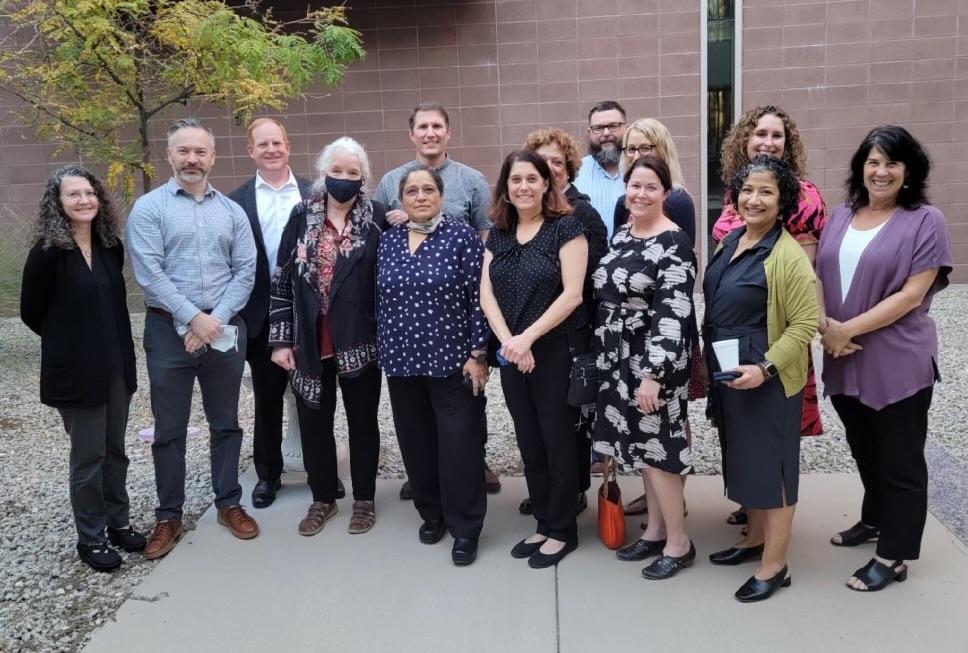
More than three years after Portland’s only sobering center closed, the city of Portland and Multnomah County have included about $2 million each for sobering and stabilization beds in their 2023-24 budgets.
However, it remains unclear what services will materialize and where additional funding will come from. And officials continue to disagree over the best approach — with one member of the county board calling the situation “embarrassing.”
A large meth stabilization center proposed last year after lengthy deliberations stalled after it failed to generate any interest in operating it from area service providers. That idea was the product of two years of planning at a cost of nearly $2 million, with the city of Portland paying most of it.
Now, officials at Multnomah County, which took the lead on the project last spring, want to take a different approach.
According to Julie Dodge, a consultant now leading the project, the county plans to open a new contracting process on July 7. She said the county is looking to pre-qualify multiple providers willing to participate in what the county is calling the Behavioral Health Emergency Coordinating Network, or BHECN (“beacon”), across six categories of service: crisis, residential, outpatient, peer recovery, harm reduction, and shelter and housing. Bringing in a broad swath of providers at this stage, said Dodge, will “allow a more nimble” process.
Specifically, the county is looking for providers willing to open or manage any of three facility types designed to address key gaps in the system. Each would be open 24 hours a day and serve adults. The types of facilities are:
A Crisis Response Center: A facility where first responders can bring people suffering from acute intoxication and mental health concerns for up to 23 hours of stabilization and observation, with support for eight to 16 people. It would also have 16-24 beds for up to five days of additional stabilization for less acute cases. This facility would divert people from emergency rooms and jails, and it would accept walk-in patients with urgent needs.
A Co-Occurring Crisis Assessment Treatment Center: A 16-bed facility to house people for 14 to 30 days when they are no longer acutely ill and are no longer experiencing acute drug withdrawal symptoms. It would offer intensive substance use and mental health treatment and could serve as a placement for people who are waiting for a slot in a residential facility, such as with an addiction treatment or mental health program, or a residential facility that treats people with those co-occurring disorders.
Substance Use Disorder Stabilization Center: A sobering center that would triage patients including walk-ins and police drop offs placing them in one of its 8 sobering beds and 8 shelter beds for people with issues involving substance use and lower acuity mental health concerns. It would also offer intensive outpatient stabilization and treatment.
Chantell Reed, interim deputy director of operations for the county’s health department, told county commissioners on May 31 that contracts are expected to be signed before the year’s end.
“Recognizing the urgency of need,” Reed told commissioners, “since 2022, there have been 311 opioid-related overdose deaths (in Multnomah County), of which 271 involved fentanyl. … There were over 300 stimulant related deaths in the same time period.”
The new stabilization or sobering beds would be in addition to the nine new sobering beds planned for the Unity Center for Behavioral Health and the eight new beds for sobering and stabilization of highly intoxicated patients admitted to Providence Health & Services Portland hospital.
A culmination of efforts
Planning for BHECN began after Portland’s only sobering center, run by Central City Concern, closed in late 2019. The nonprofit cited an inability to handle the increase in people intoxicated on drugs like meth.
A small group of people representing various behavioral health providers, CareOregon, Portland city government, and a few others began to look at ways Portland might be able to do a sobering center better.
The group eventually swelled to include more than 160 individuals representing more than 80 organizations.
Last spring, planners decided starting with a 50-bed meth stabilization center — estimated to receive 10,000 admissions per year — was the most critical service to offer first. The idea was that the large facility near the city’s center would be well-equipped to treat patients in the throes of intoxication and psychosis, and then connect them to resources, but a request for proposals from the city didn’t result in any takers.

Dodge was then hired to consult on the project, and she brought planners back together for more brainstorming.
She said given the many perspectives involved, “they were having difficulty coming to agreement on, ‘This as the one thing we should focus on.’” So, she said, they went with the three options so that providers could “vote with their feet” and let the county know which type of facility they could envision operating.
Of the facility types the county is now looking to open, only the crisis response center model resembles the vision that came out of earlier efforts, Multnomah County Commissioner Sharon Meieran told The Lund Report. She was deeply involved in the planning process early on, and was one of the project’s most vocal champions. During a May 31 county board of commissioners meeting, Meieran took issue with the three new concepts that were presented to commissioners under the BHECN name.

“Please stop calling this BHECN, because it’s not,” she said during the meeting. “It is painful for me to say this, because this has been near and dear to my heart for so long, and I have seen the potential and I have seen how much time and energy and soul people have put into it — and it turned into a mess,” she said.
Meieran later cited this new direction as one reason she voted against the county’s $3.5 billion budget last week.
She called the budget allocation and revised plan for sobering beds “embarrassing” in an interview with The Lund Report, saying that $4 million doesn’t come close to the cost of standing up any of the new service options and, while the new project outline contains all the right buzz words, it’s “vague” — as if all the prior planning didn’t happen.
“It’s disingenuous to be putting it out like this is something that’s going to solve things or even begin to solve them,” Meieran said.
Staff turnover within the county’s health department is partially to blame for the way the project rolled out, she said, noting leadership failures and a lack of throughlines.
Dodge said the county isn’t starting over and that the revised procurement process will qualify a broad base of providers for involvement in standing up a better local system of care at all levels to support people exiting out of whatever sobering and stabilization facility comes to fruition.
“We know that we need to find a lot more money,” Dodge said. “But if we wait until we have all the money lined up, it just further delays things.”
City officials support the new direction. Skyler Brocker-Knapp, senior policy advisor to Mayor Ted Wheeler, said she’s “excited about getting to this place.”
Brocker-Knapp said she understands people are frustrated and that she shares some of that frustration herself. “But I think limiting ourselves to one vision has not proven to be effective — and I think making the perfect the enemy of the good, which is often said in this community — is not helpful.”
In a new system, a patient may be dropped off at a crisis stabilization center, then go through withdrawal management at another facility, then need admission to an assessment treatment center, then into supportive housing or longer term care. While Washington County has plans for a campus that offers all these services at one location, transportation would be an issue with Multnomah County’s new plan, and that’s something Dodge said the county is looking at.
Brocker-Knapp said that without having that facility already in existence, it would take years to stand up, and she wants “something in the immediate term that actually serves people who are on the streets today.”
Ideally, the new network would continue to coordinate with local coordinated care organizations, which provide services to low-income Oregon Health Plan members, Dodge said, and also bring in the area’s Measure 110-funded Behavioral Health Resource Networks.
It’s not a panacea, planners say, but it’s a start.
And what happens after a person receives sobering or stabilization services?
Dodge hopes a new network will work to address that gap in services as well, but in the meantime, bed shortages present a challenge.
Meieran said that’s still a big missing piece.
“There’s no long-term stabilization transition for people who get these services and continue to need some pretty intense services,” Meieran said. “That’s the elephant in the room.”